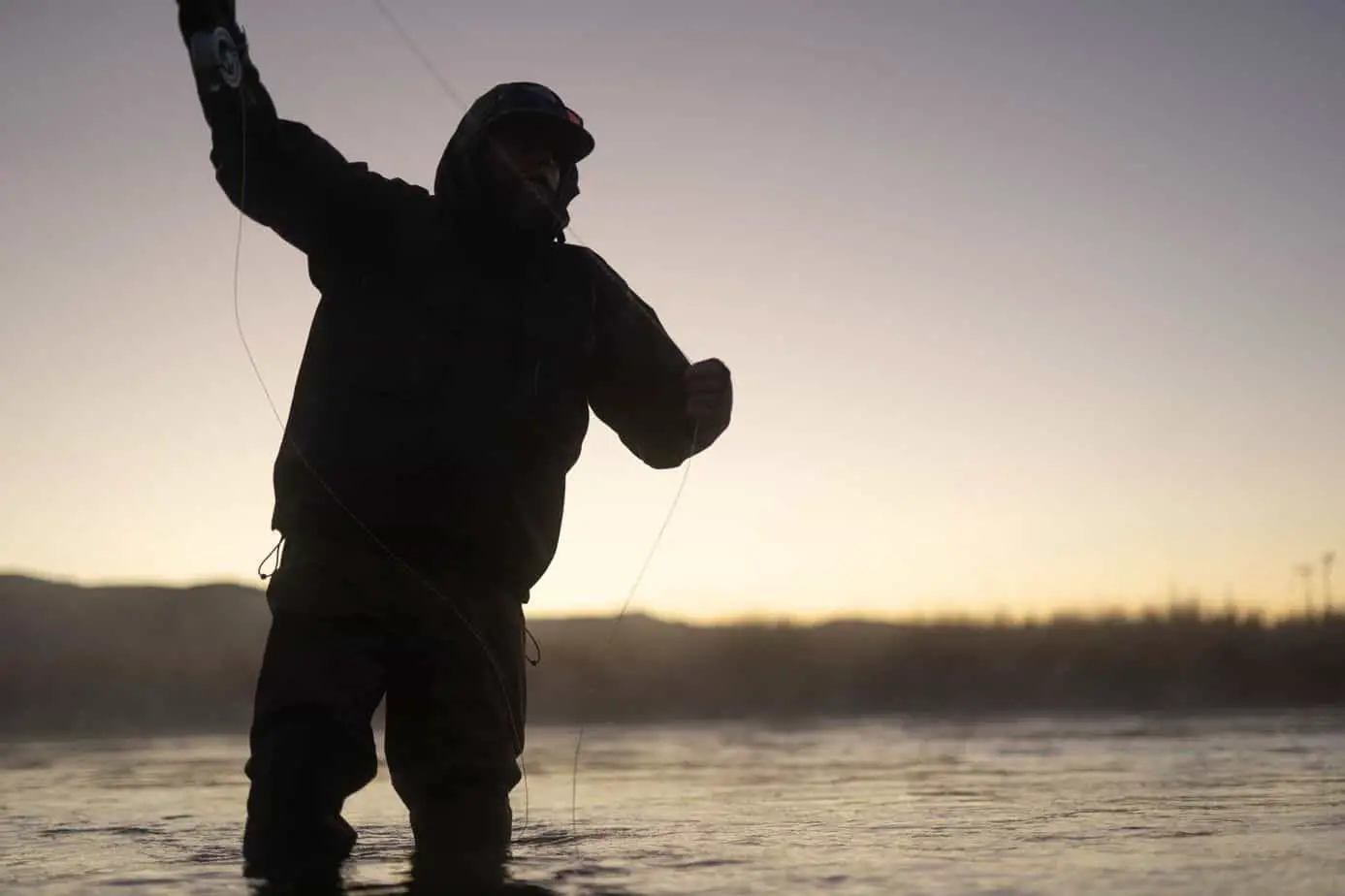If you are a beginner to fly fishing, you may not know what all of the equipment pieces are and what their purposes are. And that is okay! Part of the learning curve is getting comfortable with the equipment and building a knowledge base to fall back on in the field.
Today, we will be talking about tippets and their place in your fly fishing setup.
So, what is a tippet in fly fishing?
A tippet is the portion of your line that connects the fly to the leader. The tippet is the smallest and lightest part of your line setup. Tippets are generally made of monofilament and have a much smaller diameter than the rest of your line.
This explanation may seem simple enough, but it requires some attention and knowledge to yield the best results. It is essential to know what they are, how to rig them up, and some options on the market today.
Let’s dive in!
What Is A Tippet?
With any fishing style, getting a good grasp on the science behind terminal tackle can be one of the hardest parts. When out shopping for new gear or just getting started, you think of the rod, reel, line, and flies. Well, there is more to it, and the tippet falls into that category.
In some other forms of fishing, monofilament can be used for the entire setup. Fly Fishing has a thick, weighted line to propel the fly forward because it is so light. So, the only place that you will find this material is with the leader and tippet.
Tippets are not the only piece of important fly fishing gear. Read “What Does A Beginner Fly Fisher Need?” and “Best Fly Fishing Gear for Beginners.”
Why Are Tippets Important?
Tippets are used so the fly can enter the water without the rest of the rig spooking the fish. This is why light monofilament is perfect for the job. Both the leader and the regular line are heavier than the tippet, so having a light, clear line connected to the fly better sets you up for a strike.
The whole idea is to get your line’s heavier parts away from the fish you are trying to target. Tippets aren’t necessarily required but are definitely a best practice.
How Long Should The Tippet Be?
Choosing how long your tippet should be is more important than you may realize. This is important because you need enough length not to spook the fish, but it will mess up your cast and hook-setting ability if it is too long. This length has a direct effect on the presentation of the fly.
The length of a tippet depends on how long your leader is. For leaders from 10-12 feet long, having about four feet of tippet is good. This might seem like a lot, and you can definitely have it be shorter, but four feet is a good general length.
If you go longer than 12 feet for the leader, you might want to bump up your tippet to four-and-a-half or five feet. This is not a hard and fast rule, so don’t feel like this is necessary. You could get away with a two-foot-long tippet, but this will not allow for a lot of wiggle room when changing out flies. After making three or four fly changes, you will probably only have a few inches of tippet left, so be prepared for that aspect.
What Are Tippet Rigs?
Before we lay out some of the best brands on the tippet market, it is important to know what materials make up many popular tippets. Two primary materials make up most tippets: nylon (monofilament) and fluorocarbon.
First off, we have nylon. Nylon is a good option when the water isn’t very clear. Because nylon can have a shiny finish that can alert fish, so if you use it in clear water, the fish can see it, and you won’t get the best use out of the tippet as you could otherwise.
The biggest perk of nylon is its floatability. Nylon floats better than fluorocarbon, so this will not disrupt the fish down below when the water is murky. Although Nylon does absorb a bit of water, as long as you change them out every once in a while, they will work fine.
The other line is fluorocarbon. Although it is pretty split, fluorocarbon is the new and improved monofilament taking over the industry. This line is a bit more expensive, but its stiffness and ability to not tangle easily are huge selling points.
When you have a stiffer line, there are better odds that the fly will land in the water how you want them to. With nylon, tangling can happen in the air, and upon landing, it can tangle. This usually isn’t an issue with Fluorocarbon.
There is no rule that you must pick one or the other, so a lot of it comes down to personal preference.
Top Tippet Brand And Models
Now that you have a basic understanding of the market in terms of tippet types, here is a breakdown of the top brands and models!
Rio Powerflex
Ranging in sizes from 1x to 7x, the Rio Powerflex is one of the most popular tippet lines on the market. Just about every fly fishing shop will have this brand, as Rio is a fly fishing industry leader. This is a very affordable, basic nylon tippet.

Orvis Superstrong Plus
Another big player in the fly fishing game is Orvis. This company has been around for a long time and has strong ties in the rod and reel markets. Their big reputation is even upheld for line. The Superstrong Plus tippet is great for many scenarios as it ranges from 0x-8x. This is a nylon model, so keep that in mind.

Rio Fluoroflex
On the Fluorocarbon side, the Fluoroflex is a high-end tippet that is one of the best on the market. Not everyone will be able to shell out big bucks for a small spool, but you are getting the Rio quality that is driving the industry.

Scientific Anglers Absolute Fluorocarbon
In terms of price, this model is at the upper end of the spectrum. This probably isn’t for the budget angler. However, you can have some confidence in your purchase given the reputation and quality of the product.

Orvis Tippet Tool
This entry isn’t actually a tippet line, but it is a tool that helps you through the process of assembling your rig. This is a little metal tool that poses as an organizer for your tippet lines. You simply slide the tippet spools over the tool, and they are secured in place. To get the best use possible, hang up both sides so the tippet spools can be freely used, and the line will come out with ease. You will no longer have to worry about loose spools laying around and being damaged.

Conclusion
Hopefully, you now know a bit more about tippets for fly fishing. To a beginner, this can be very confusing because tippets aren’t found in other areas of fishing. So, knowing what they are, why they are used, and what some of the top options are will help you next time you’re in the market for fly fishing tippets!


